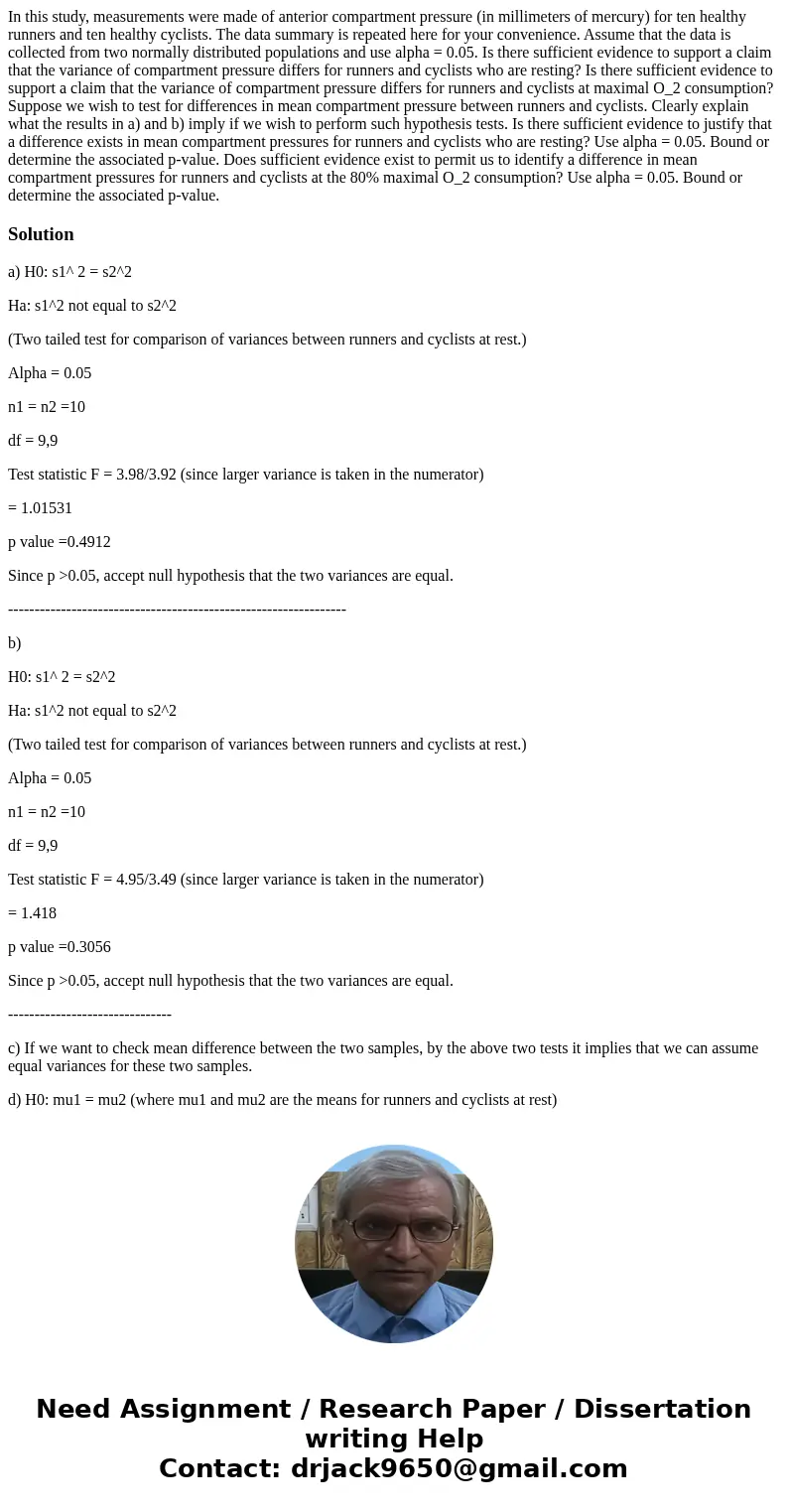In this study measurements were made of anterior compartment
Solution
a) H0: s1^ 2 = s2^2
Ha: s1^2 not equal to s2^2
(Two tailed test for comparison of variances between runners and cyclists at rest.)
Alpha = 0.05
n1 = n2 =10
df = 9,9
Test statistic F = 3.98/3.92 (since larger variance is taken in the numerator)
= 1.01531
p value =0.4912
Since p >0.05, accept null hypothesis that the two variances are equal.
----------------------------------------------------------------
b)
H0: s1^ 2 = s2^2
Ha: s1^2 not equal to s2^2
(Two tailed test for comparison of variances between runners and cyclists at rest.)
Alpha = 0.05
n1 = n2 =10
df = 9,9
Test statistic F = 4.95/3.49 (since larger variance is taken in the numerator)
= 1.418
p value =0.3056
Since p >0.05, accept null hypothesis that the two variances are equal.
-------------------------------
c) If we want to check mean difference between the two samples, by the above two tests it implies that we can assume equal variances for these two samples.
d) H0: mu1 = mu2 (where mu1 and mu2 are the means for runners and cyclists at rest)
Ha: mu1 not equal to mu2
Two tailed test
Group Group One Group Two
Mean 14.5000 11.1000
SD 3.9200 3.9800
SEM 1.2396 1.2586
N 10 10
t = 1.9247
df = 18
standard error of difference = 1.767
The two-tailed P value equals 0.0702
Since p >0.05 accept that the two means are equal.

 Homework Sourse
Homework Sourse